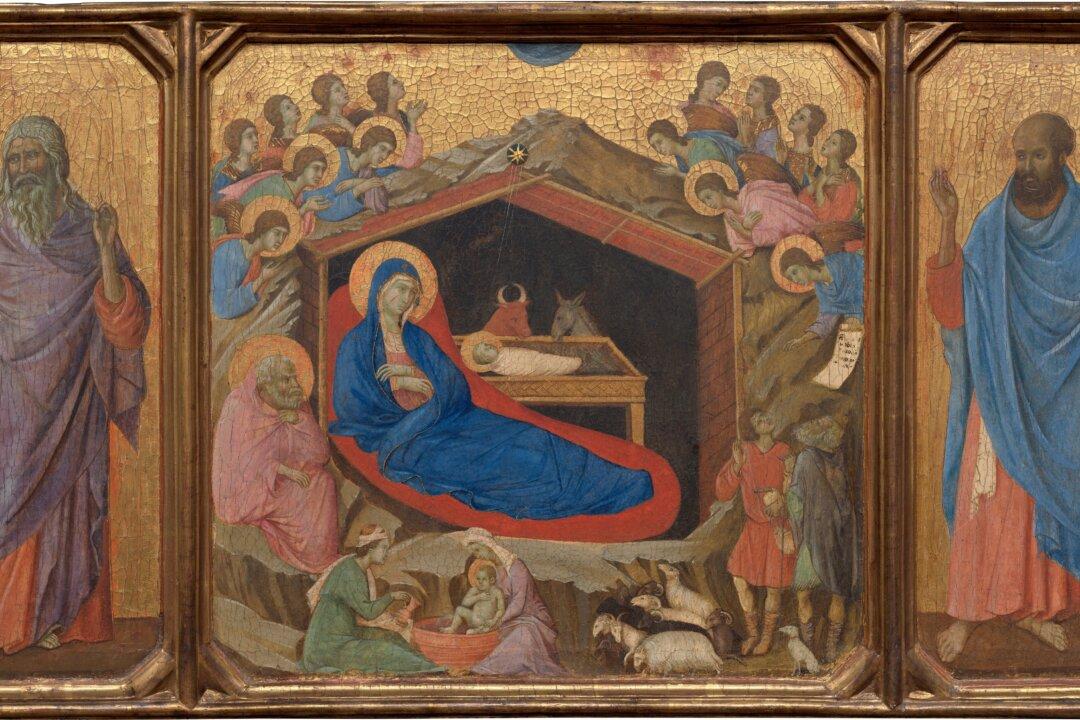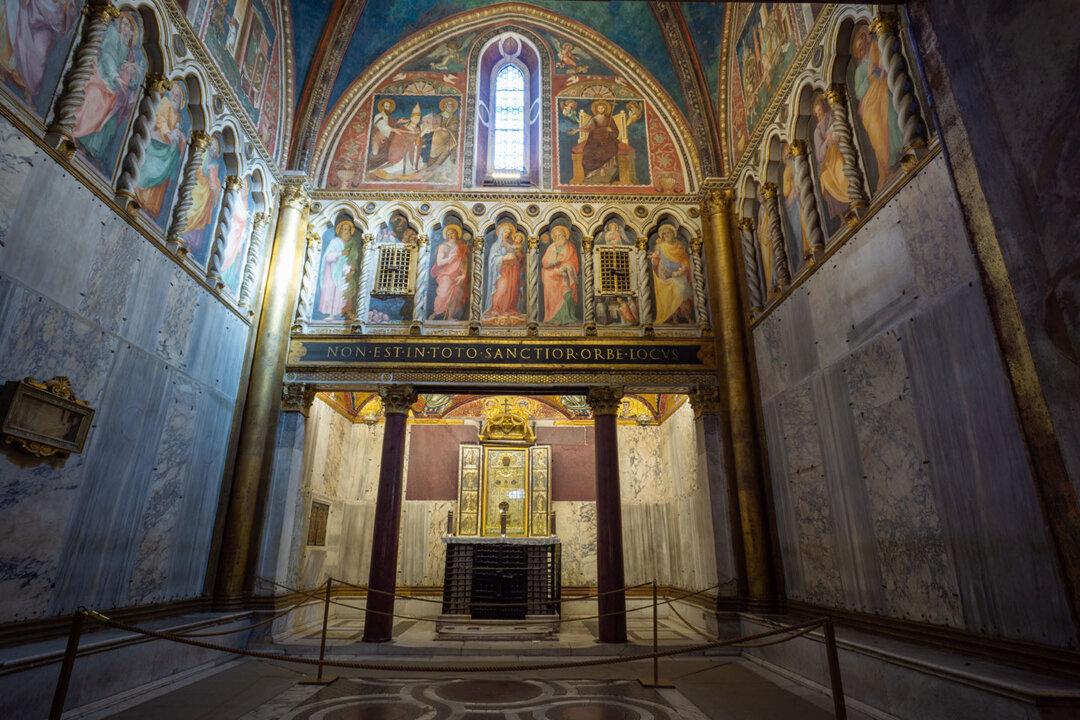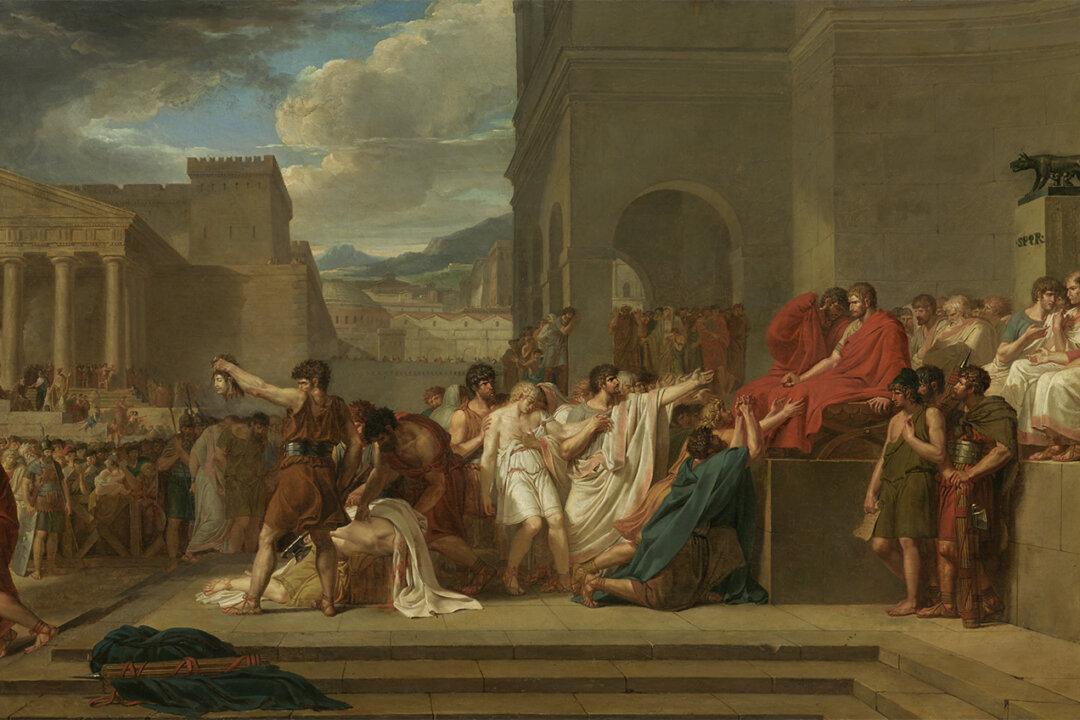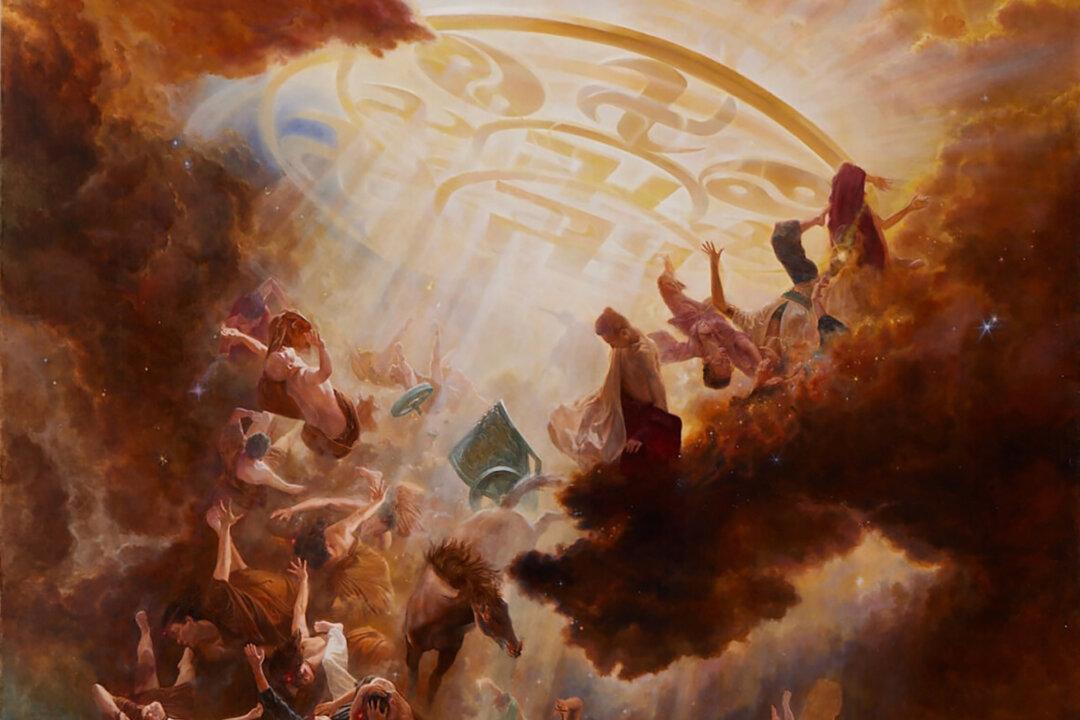“… On a mundane market day I saw the bearing of this picture of stream and mountain; With a chill wave I suddenly sense my mind opened, Attacked by harsh frost, when the foliage took leave of the branches…”
Li was a literatus, a man of letters who had earned a post in the Ming government through official literary examinations. In these verses, he praised the genius of the painter who had managed to depict every detail of a beautiful landscape in a mere eight-inch-tall picture. He specifically noted his own emotional response of refreshment and tranquility in the presence of the work.Art in an Age of Political Turmoil
The painting that Li Minbiao viewed was created by Zhao Yuan, also a literatus, but one who lived in a turbulent age, when China was ruled by the Mongol court (1271–1368). Particularly known for his painting, Zhao worked in a landscape tradition that dominated literati circles of the time. In the preceding dynasties of the Tang (618–917) and the Song (960–1279), the genre had gradually come to embody the longing of educated men for nature and their desire to escape the mundane world that they inhabited, in search of higher spiritual pursuits.However, as the Song court came to be infected with severe corruption and eventually ceded control of the country to the Mongols, the conventional Confucian career path in civil service became increasingly limited for the literati. As a result, their political ambitions diminished, and the escapist sentiments among these men of letters intensified.
Zhao Yuan’s ‘Landscape’
In this piece, untitled, as many of the genre were, Zhao Yuan followed the traditional model for landscape paintings that was perfected during the Song Dynasty, but he added a modern 14th-century tone of calligraphic expressivity.The intense visual drama of nature contrasts strikingly with the peaceful inaction of man, as shown by the monumental and awesome mountain in the center and the quiet residence over which it towers. Situated in nature’s wondrous sublimity, the tiny human figures are able to conduct themselves in such leisurely serenity that they appear untroubled by all worldly matters.

One Scroll, Two Paintings
Mounted on the same handscroll is a contemporaneous piece by Shen Xun that depicts a bamboo grove by the water. The work is entirely devoid of human presence, with a mountainous backdrop barely visible in the distance.
According to another comment in the colophon, the two paintings were put together in 1562 for some “essential similarity in aura and taste,” despite their completely different subject matters and pictorial compositions. Zhao’s heavy landscape nearly fills the pictorial plane, while Shen’s bamboos stand delicate and light, leaving ample negative space and giving the painting a capacity to breathe.
The atmospheric similarity for which the two pieces were combined might have referred to their shared nature of tranquility. The stillness of the bamboos and the inaction of the human figures seem to speak a common language that conveys a sense of quietude experienced by the artist-literati living in seclusion: They are able to entertain themselves with nature, knowledge, and art, and at that moment neither fame nor fortune mattered.
Thus had the two artists expressed their mental state in their works. Such depth of stillness portrayed in the pictures could only have been authored by those with tranquil hearts. In fact, this tranquility had moved the 16th-century viewers so much that they decided to mount the two paintings together.
In 1734, another scholar decided to commemorate the combination of these two pieces by adding to the handscroll a frontispiece of four characters written in an antiquarian style that reads, “Zhao and Shen joined in harmony.”








